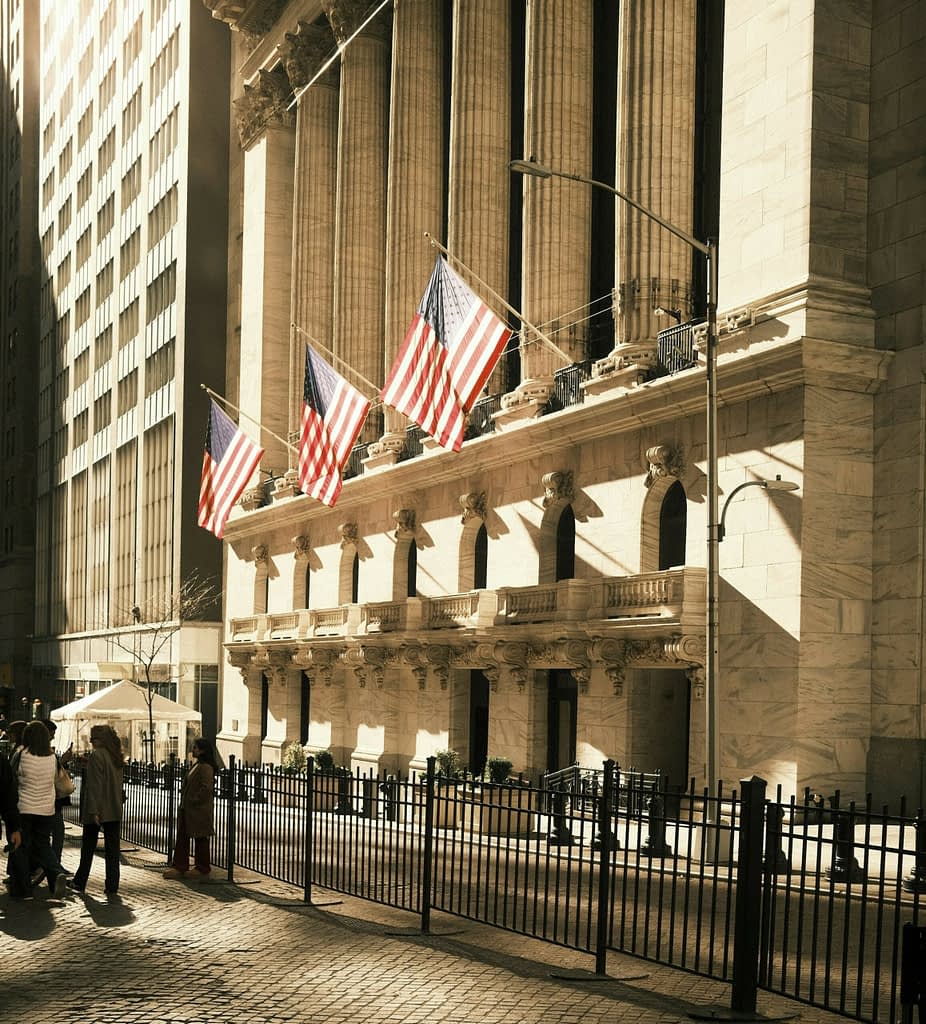US stocks plummeted to their biggest drop since the height of the pandemic, wiping out $2.5 trillion in value after President Donald Trump’s drastic new trade tariffs triggered widespread recession fears and drove investors to seek refuge in safe-haven bonds and the Japanese yen.
Historic Decline Across Markets
The S&P 500 fell 4.8% – the largest decline since June 2020. The Nasdaq 100 plunged 5.4% – its worst day since September 2022 – led by Apple’s 9% loss, while Nvidia and Tesla also tumbled. Everything from athletic footwear manufacturers to clothing companies crashed after Trump imposed new tariffs on key manufacturing countries including Vietnam and Indonesia. Nike dropped 14%.

On Wednesday, Trump imposed the steepest American tariffs in a century – a 10% tariff on all exports to the US, with even higher duties for approximately 60 countries. Among the hardest hit were small-cap stocks. The Russell 2000 Index fell 6.6% into a technical bear market after losing more than 20% compared to its record from late 2021.
Main Impacts of the New Tariffs:
- Currency Market Collapse: Bloomberg’s dollar index recorded its largest drop in history
- Flight to Safety: The yield on 10-year Treasury bonds briefly fell below 4% for the first time since October
- Retail Sector in Trouble: Best Buy fell 18% and Dollar Tree 13%
- Volatility at Maximum: The Cboe Volatility Index shot up to 30, the highest level this year
Key Labor Market Data
“This jobs report is crucial,” said Julie Biel, portfolio manager at Kayne Anderson Rudnick. “We are now much more vulnerable to recession due to tariffs than we were a few months ago.” On Friday, investors will get a look at monthly employment data, which could have far-reaching implications for bond, stock, and currency markets, as well as the Fed’s next moves.
Warnings About Long-Term Impacts
Credit rating agency Fitch warned that the tariffs were a “game-changer” for the global economy, threatening to reduce US economic growth by 2 percentage points and increase inflation to nearly 5% according to UBS. Analysts have lowered their outlook for the S&P 500 in 2025 and expect earnings growth of 9.5% this year, down from nearly 13% in early January.
“Oh boy, now what? What will other countries do? We still have to see what the retaliatory measures will be,” concludes Thomas Martin, senior portfolio manager at Globalt Investments.




